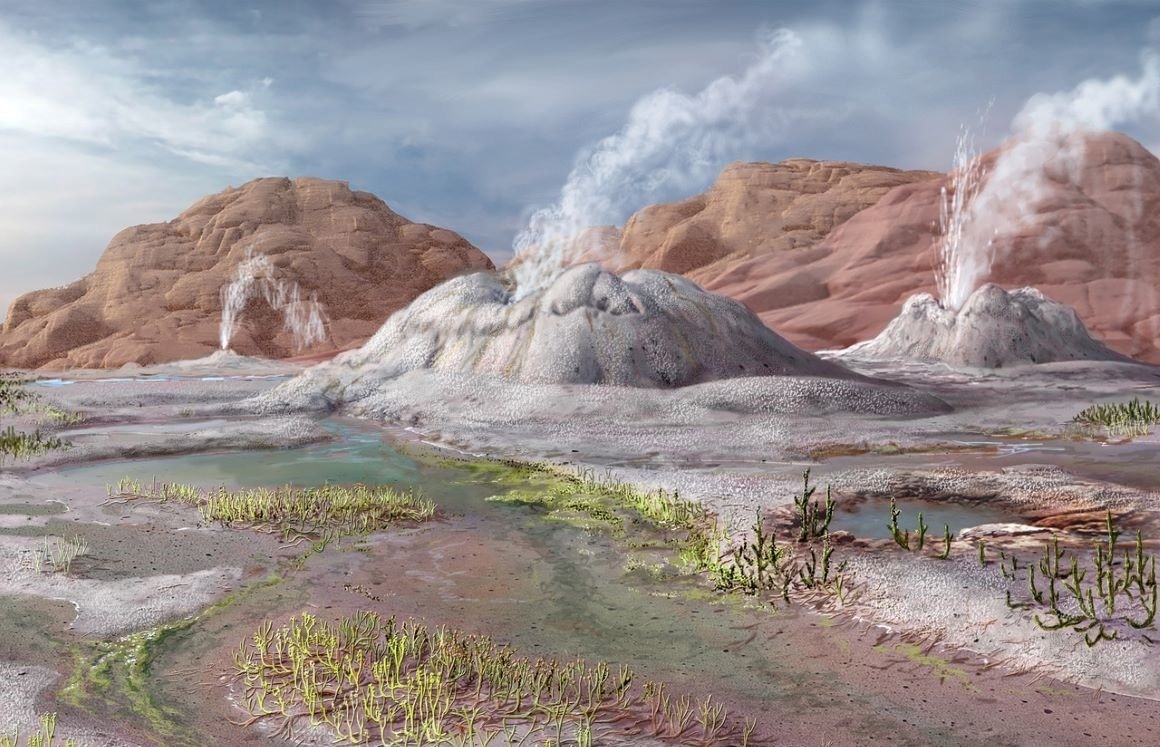A recent breakthrough has unveiled the earliest disease-causing fungus residing within the fossil collections of the Natural History Museum.
 Artistic rendition of the Rhynie Chert in the Early Devonian period. Image Credit: Victor O. Leshyk.
Artistic rendition of the Rhynie Chert in the Early Devonian period. Image Credit: Victor O. Leshyk.
Named Potteromyces asteroxylicola, this 407-million-year-old fungal plant pathogen pays homage to Beatrix Potter, the renowned author of Tales of Peter Rabbit and a passionate fungi enthusiast.
Beatrix Potter's insightful drawings and early studies on fungal growth, often preceding scientific research by decades, have solidified her stature as a significant figure in mycology. The newly discovered Potteromyces was identified in fossil samples from the Rhynie Chert, a pivotal geological site in Scotland renowned for preserving an Early Devonian community of plants, animals, bacteria, and fungi in exceptional detail.
In collaboration with mycologists from the Royal Botanic Gardens, Kew, the comprehensive study indicates that disease-causing fungi, akin to those responsible for the current ash die-back affecting the UK’s native ash trees, as well as fungi facilitating nutrient circulation crucial for the survival of plants and other organisms, find a historical precedent in the existence of Potteromyces.
Although other fungal parasites have been found in this area before, this is the first case of one causing disease in a plant. What’s more, Potteromyces can provide a valuable point from which to date the evolution of different fungus groups, such as Ascomycota, the largest fungal phylum. Naming this important species after Beatrix Potter seems a fitting tribute to her remarkable work and commitment to piecing together the secrets of fungi.
Dr. Christine Strullu-Derrien, Study Lead Author and Scientific Associate, Natural History Museum
In 2015, Christine uncovered the initial specimen of Potteromyces, and its reproductive structures, referred to as conidiophores, exhibited a distinctive shape and formation unprecedented in previous observations.
Equally noteworthy was the fungus’s enigmatic nature, as it was discovered attacking the ancient Asteroxylon mackiei plant. The plant’s response manifested in the development of dome-shaped growths, indicating its vitality during the fungal onslaught.
To definitively classify it as a new species, the team needed to locate another instance of the fungus. Given the significant variability in fungal characteristics among individuals, finding a second case was crucial.
The confirmation came to fruition with the discovery of a second specimen within the collections of the National Museums of Scotland, found on another specimen slide from the Rhynie Chert.
New technology available to us, such as confocal microscopy, has enabled us to unlock more secrets from fossils housed in museum collections, such as those within the Natural History Museum.
Dr. Christine Strullu-Derrien, Study Lead Author and Scientific Associate, Natural History Museum
Christine added, “When I first started work on the Rhynie Chert, it was only meant to take two or three years. It’s now been 12, and I still think there is a lot to discover from this fabulous site.”
Source:
Journal reference:
Strullu-Derrien, C., et al. (2023). A fungal plant pathogen discovered in the Devonian Rhynie Chert. Nature Communications. doi.org/10.1038/s41467-023-43276-1.